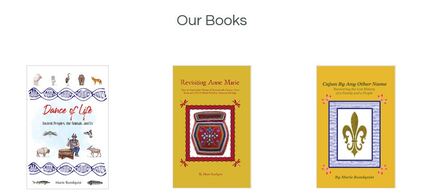|
Ancient, historical figures, lost in legends, take shape.
Using a method patented by the University of California, Davis, where "tooth enamel proteins" were analyzed, researchers were able to identify the remains of an ancient Iron Age female warrior on the Isles of Scilly, according to a July 28, 2023 news release that appeared in Archeaology. The news release also has a reference to a legendary female warrior known as Boudica, Boudicca, or "Bodiccea," Queen of the Iceni tribe of Ancient Britain, who led the rebellion against the Romans in AD 60. Who among us has not read at least one historical fiction novel, or paged through an anthology of Celtic history, to find stories of Boudica's exploits? I did, and was pleased to find my copy of Barry Cunliffe's book, The Ancient Celts, which I read when it was first published in the late 1990s. What a force she was at the time! It is fascinating to think about how "tooth enamel proteins," as were analyzed here, have helped archeologists turn Iron Age myths into matter and fiction into fact. Also noted in the news release is the relatively recent finding that a Viking warrior, once thought to be a man, on further scrutiny turned out to be a female -- reversing a long-standing, and antiquated, assumption. See: Archealogy News Release. (2023, July 28). "Tooth Enamel Analysis Offers Clue to Identity of Iron Age Warrior." https://www.archaeology.org/news/11618-230728-iron-age-warrior (Accessed 7/29/2023). See also: Buonasera, T., Eerkens, J., de Flamingh, A. et al. A comparison of proteomic, genomic, and osteological methods of archaeological sex estimation. Sci Rep 10, 11897 (2020). https://www.nature.com/articles/s41598-020-68550-w (Open Access) Note regarding the University of California 2020 research: UC Davis news release dated July 17, 2020, has that "The site is being excavated by the Far West Anthropological Research Group of Davis in collaboration with the Muwekma Ohlone tribe." See: https://www.ucdavis.edu/curiosity/news/archaeologists-use-tooth-enamel-protein-show-sex-human-remains See also: Cunliffe, B. The Ancient Celts. (1997). Oxford University Press. Note that the second edition of this book, published in 2018 by Oxford University Press includes significant new findings and DNA developments in the world of ancient Celtic history. To any family researcher who shouts, or has ever shouted, "I JUST FOUND [fill in the blank ancestor]" just when you thought you would NEVER FIND [fill in the blank ancestor] by reading through EVERY PAGE of a civil or parish register, I dedicate the following post:
I had the occasion to recommend a couple of reliable sources on Wikitree, which I cited while adding family profiles to that system. Happily, the feedback received in response to my recommendations, appeared to be very positive. As there is no reason why I should not share these same sources with everyone, I am publishing my recommendations along with the links to Wikitree Reliable Sources lists where they have been posted. The sources I've recommended in this post have original scanned and digitized records, and they add to the numerous scanned and digitized census reports, civil and church registers, and other records inventories made available to us so graciously by the Canadian and Nova Scotia archives, the State of Louisiana, the Diocese of Baton Rouge, and other State organizations. I can't tell you how very helpful these sources are in researching and verifying the marriage, births, and deaths of our French and Acadian ancestors and how exciting it is when the name of a beloved ancestor, or two, or three, born hundreds of years ago, "pop out" (and they do have a way of "popping out") while reading through the records, in their original form. The birth notice for ancestor Charles Gaschet de Lisle, and one for the marriage of his parents, did "pop out" (finally!) in the Les Archives nationales d'outre-mer after paging through hundreds of records. I felt elated, like I struck gold, when I found their names, and all of the details of their birth and marriage events as recorded in French, in the pages of antique civil registers. That "aha" feeling was every bit worth the time it took to read through every page! Family records appear, as recorded in the original French language, in the civil registers of Saint-Pierre, Martinique as cited below (as an aside, I find I have autosomal DNA matches in My Heritage whose families are also from Saint-Pierre, Martinique -- but to find out how we relate, exactly, is research for another day):
Moving on to the Acadians. I have added my mtDNA-proven matrilineal line, and other related ancestors, starting with me (Wikitree profile M. Asselia Rundquist) and tracing all the way back, from mother to mother, to ancestor Anne Marie Mi'kmaq in Wikitree, and have of course, included my ancestors who were exiled to the State of Maryland. While editing a profile of Angelique David, one of my direct ancestors in my matrilineal line, I referenced the AcadiansWereHere.org website where we have a county map and scanned images of the 1763 census taken in Colonial Maryland.
I invite you to research both of these recommended sources with confidence, enjoy using the reliable sources pages referenced in the post, and have a great time researching ancestry! |
Archives
June 2025
Categories
All
|
DNA-Genealogy-History.com Site Index:
Copyright 2025 Marie Rundquist., DNA Genealogy History, LLC
DNA Genealogy History, LLC is a registered S Corporation with the State of Virginia and the Federal Government since 2017, is a retailer and distributor of books and digital publications, and is certified, authorized and empowered to collect Sales and Use Tax for the Commonwealth of Virginia.
E-Mail Your Comments to [email protected]
This website is not intended for users located within the European Economic Area.
DNA Genealogy History, LLC is a registered S Corporation with the State of Virginia and the Federal Government since 2017, is a retailer and distributor of books and digital publications, and is certified, authorized and empowered to collect Sales and Use Tax for the Commonwealth of Virginia.
E-Mail Your Comments to [email protected]
This website is not intended for users located within the European Economic Area.





 RSS Feed
RSS Feed
